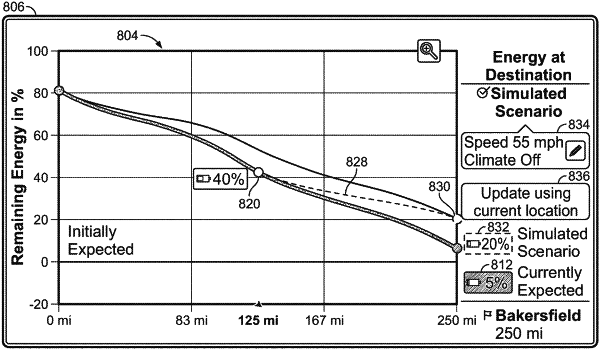| CPC G01C 21/3469 (2013.01) [G01C 21/3697 (2013.01); Y02T 10/72 (2013.01)] | 17 Claims |

|
1. A method comprising:
determining, based, at least in part, on a predicted driver characteristic, a first energy-versus-distance measure for a planned driving route of a vehicle, the first energy-versus-distance measure determined using an energy model;
presenting the first energy-versus-distance measure on a graphical user interface associated with the vehicle;
identifying an already-driven part of the planned driving route;
determining, based on information associated with the already-driven part of the planned driving route:
a model error associated with the energy model, wherein the model error is determined based on a predicted energy consumption and an actual energy consumption; and
a driver error representing a difference between the predicted driver characteristic and an actual driver characteristic;
determining a second energy-versus-distance measure by modifying the first energy-versus-distance measure to account for at least one of the model error or the driver error; and
based on receipt of first user input to the graphical user interface, presenting via the graphical user interface:
a first graph illustrating remaining energy in an energy storage as a function of distance, the remaining energy for the first graph being calculated based on the first energy-versus-distance measure; and
a second graph illustrating remaining energy in the energy storage as a function of distance, the remaining energy for the second graph being calculated based on the second energy-versus-distance measure.
|